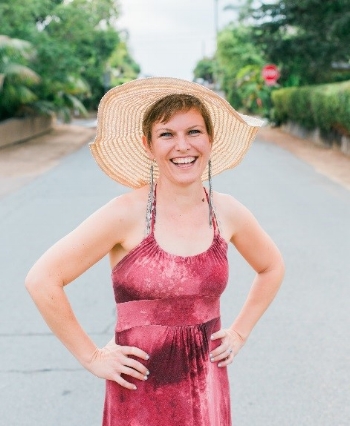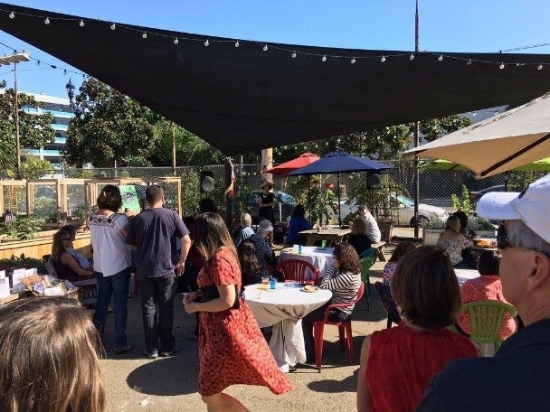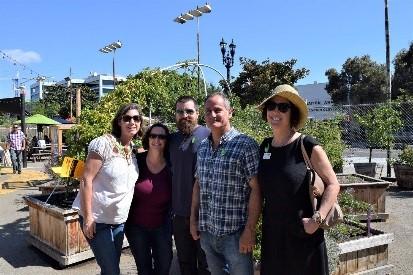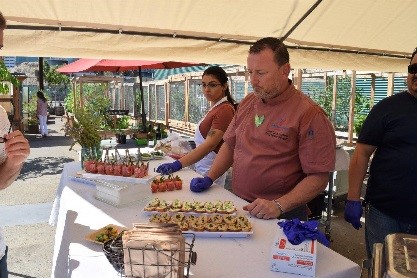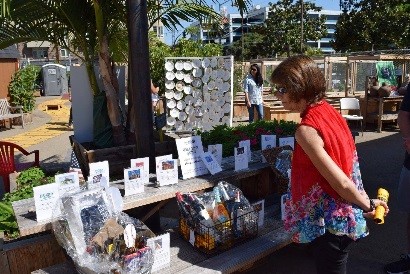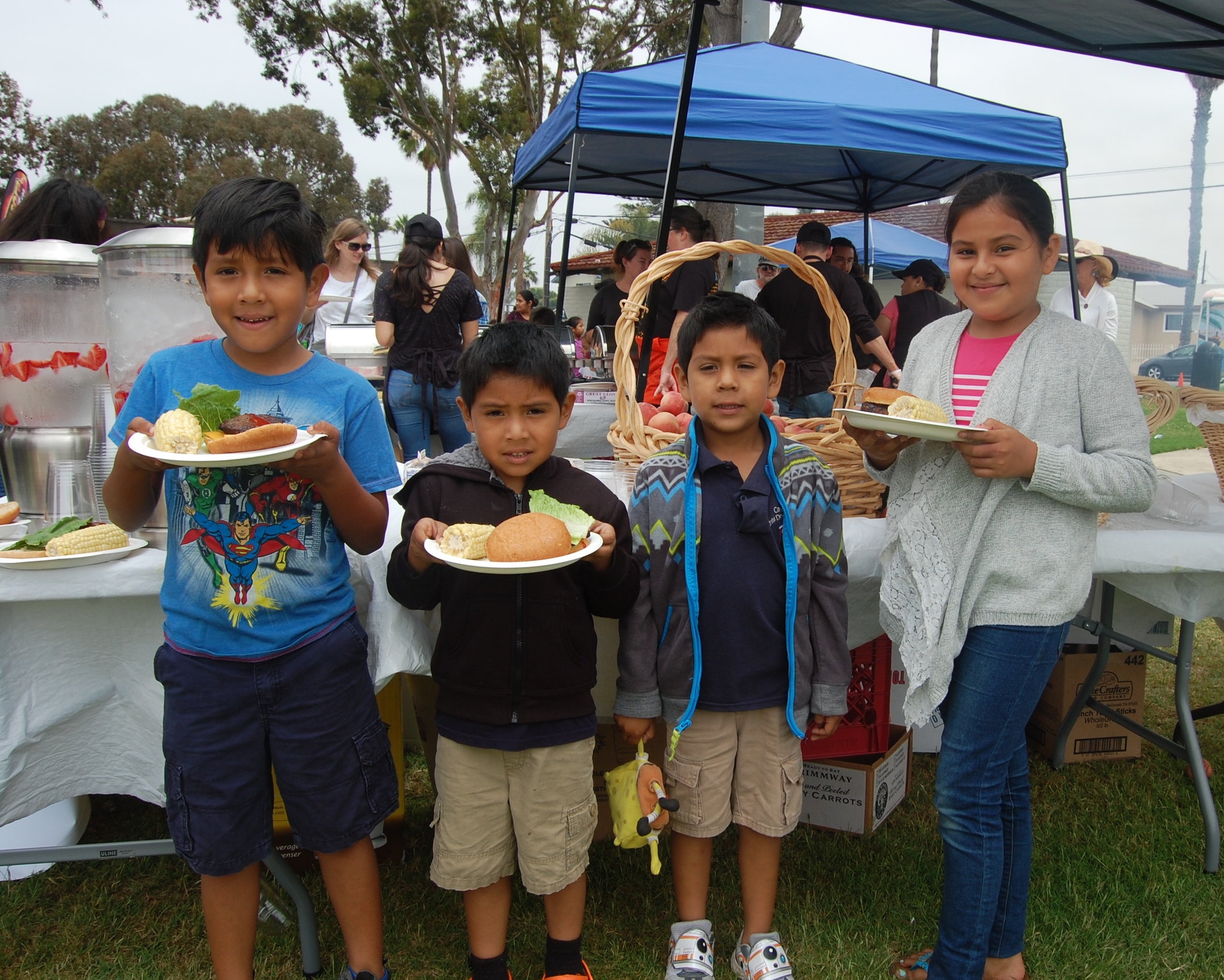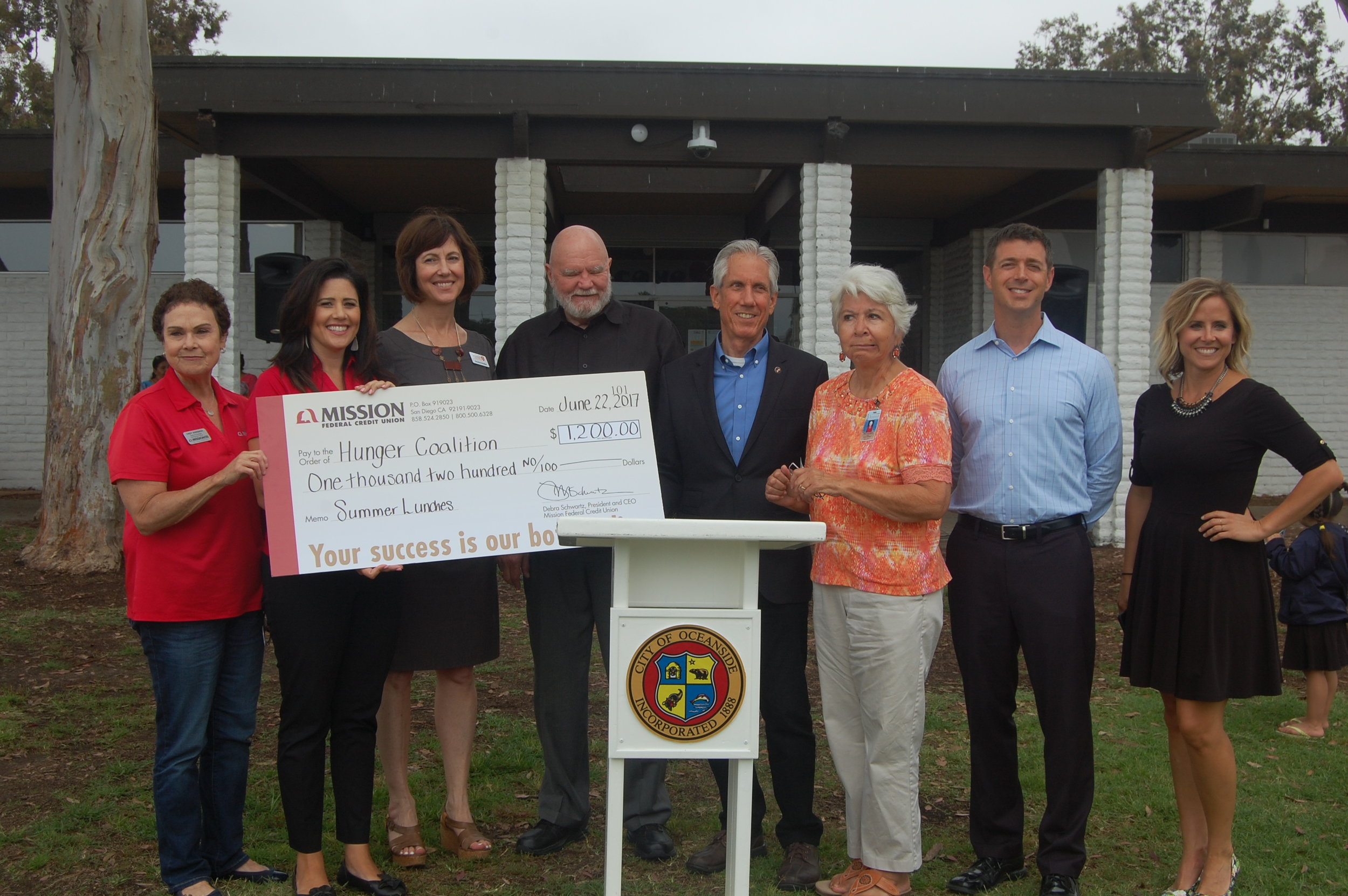A family walks up to the cashier at the grocery store, takes out their wallet to purchase food, and doesn’t have enough to pay for the items on the checkout belt. How did they get here?
It is easy to conclude that this family made poor individual choices and decisions. Perhaps they didn’t budget their money wisely that month. Perhaps they haven’t put in the effort to find a higher-paying job. Perhaps they rely on CalFresh/SNAP (formerly known as food stamps) and already used up all their monthly benefits.
The reality of food insecurity in San Diego – and across the nation – is far more complex than individual choice and isolated moments at the checkout line.
Living Wage Jobs
Unless a person sustains themselves entirely on food they grow themselves – something that has become increasingly rare in the United States – they need a source of income. Finding and securing a living wage job is not a simple feat. One needs training, education, work experience, and connections to gain employment.
In San Diego County, a staggeringly high cost of living and high competition for a limited number of living wage jobs intensifies the challenge. If a San Diegan does not have a basic adult education and lacks work experience, it may take anywhere from three to five to as many as ten years to overcome this barrier. While a person pursues career training or education, they must survive with a limited income. When faced with costs related to career and education, food often becomes a “flexible expense.” One group this often applies to is college students. In 2016, nearly 20% of University of California students reported experiencing very low food security. Facing the rising costs of books, supplies, and tuition, students may skip meals to pay for their education.
Cost of Food, Time, and Transportation
Food prices (and the relative prices of other necessary goods) impacts whether people experience food insecurity. In San Diego County, the average cost of a meal is $3.23, higher than the national average of $2.94. Further, to shop for and cook food at home requires time, food literacy, and cooking skills. This means that more afforable (and less healthy) prepared food is often the only viable option.
Lastly, a person may struggle to make it to the checkout line at all. For residents who live in a “food desert,” the nearest grocery store may be far enough away to necessitate a car ride. The cost of owning, maintaining, and fueling a car can add up. In car-dependent San Diego County, the weight of these costs is particularly heavy.
Policies
Federal food assistance programs act as vital safety nets for those experiencing financial hardship. However, these programs are not always available to those who need them. The Federal Poverty Level – the metric that determines eligibility for these programs – is an outdated measure that only captures extreme deprivation.
For example, to be eligible to receive CalFresh benefits, a person must have a household gross monthly income below 200% of the Federal Poverty Level. The 2017 Federal Poverty Level threshold for a family of four is $24,600, so 200% of that level is $49,200. In San Diego County, however, a family of four may need as much as 300‐365% of the Federal Poverty Level (or $73,800 - $89,790) to meet their most basic needs, especially if their children are not yet in school and require childcare.
Further, the structure of federal food assistance is such that as a person gradually rises in income level, attaining more skills and training, they experience sharp cuts in benefits. This “benefits cliff” traps people between ineligible for benefits but not making enough to make ends meet. Lastly, many of those who are eligible for federal food assistance do not receive benefits because of complex eligibility guidelines, excessive paperwork, or lack of awareness.
Household and Individual Characteristics
Many factors outside of individual choice affect whether a person has enough food for an active, healthy life. A person's mental and physical health status may serve as a barrier to food access. This often includes veterans, the elderly, and those living with disabilities, among others. For example, in San Diego County, 49.1% of food insecure adults are disabled. Whether a person has a partner or spouse to supplement income can influence their ability to access food. For example, in San Diego County, 64.6% of low-income single parent households are food insecure.
Persistent Historical Inequality
Perhaps the most enduring root cause of food insecurity in the United States is racial, ethnic, and class-based inequities that span generations. Inequity has been deeply entrenched in policies and practices throughout our history. This inequity has created a divide in the accumulation of wealth (savings, home, or business equity) that historically advantages some populations, while disadvantaging others. Low-income people, people of color, women, single mothers, people with disabilities, etc. are more likely to experience food insecurity because of intergenerational inequality.
For example, over the past 30 years, the average wealth of white families has grown by 84% —1.2 times the rate of growth for the Latino/a population and 3 times the rate of growth for the African American population. This mirrors the reality of food insecurity in San Diego County, where food insecure adults are disproportionately Latino/a. 52.7% of food insecure adults are Latino/a, versus 26.3% that are White.
The Reality of Food Insecurity
In sum, food insecurity is the result of a complex relationship between the ability to acquire and maintain a living wage job, the cost of food, time, and transportation, food assistance policies, and enduring historical inequalities. When we see food insecurity with this lens – not a result of poor individual choices, but a result of a complex array of environmental, social, and historical factors – we are better able to make strides in ensuring that all San Diegans have enough food.
- Authored by Rosa Rada, 2017 Emerson Hunger Fellow





